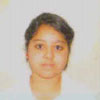
The IELTS Reading section is a crucial component of the International English Language Testing System, designed to assess your ability to read and understand a variety of texts in English. This section is important for those looking to study or work in environments where English is the primary language.
Key Features :
| Reading test duration | Number of questions | Passages |
|---|---|---|
| 60 minutes | 40 | 3 |
1. Academic reading
2. General reading
(1) Format
| Academic IELTS | General IELTS |
|---|---|
| 1: Total number of questions: 40 | 1: Total number of questions: 40 |
| 2: Time: 1 hour | 2: Time: 1 hour |
| It includes 3 passages and each passage has approximately 13 to 14 questions and in total it would be 40 questions. | It includes 3 passages out of which first 2 passages are further divided into 2 small Passages each having 6 to 7 questions each. 3rd passage is entirely similar to academic passages with 13 questions of its own. |
(2) Content
| Academic IELTS | General IELTS |
|---|---|
| 1 : level of difficulty: higher | 1: level of difficulty: medium |
| 2 : reading passages are usually in the form of research papers and there are variety of topics ranging from basic academic subjects
to complex areas of robotics. The majority of the content is taken from familiar topics that students cover in their school curriculum. Hence, the familiarity of the topics helps students to understand concepts better. |
2 : usually consists of topics related to work and business, and different types of advertisements. Basically, tricky content is presented which seems very easy to answer but is confusing mostly and hence requires careful and logical reasoning. |
Academic Reading scores
| Correct Answers | Band Scores |
|---|---|
| 40-39 | 9 |
| 38-37 | 8.5 |
| 36-35 | 8 |
| 34-33 | 7.5 |
| 32-30 | 7 |
| 29-27 | 6.5 |
| 26-23 | 6 |
| 22-19 | 5.5 |
| 18-15 | 5 |
| 14-13 | 4.5 |
| 12-10 | 4 |
| 9-8 | 3.5 |
| 7-6 | 3 |
| 5-4 | 2.5 |
General Training Reading scores
| Correct Answers | Band Scores |
|---|---|
| 40-39 | 9 |
| 39 | 8.5 |
| 37.38 | 8 |
| 36 | 7.5 |
| 34-35 | 7 |
| 32-33 | 6.5 |
| 30-31 | 6 |
| 27-29 | 5.5 |
| 23-26 | 5 |
| 19-22 | 4.5 |
| 15-18 | 4 |
| 12-14 | 3.5 |
| 9-11 | 3 |
| 6-8 | 2.5 |
For both academic and general reading texts, question types are similar. Following is a brief discussion of them.
| S.No. | Task type | Instructions | What you will have to do |
|---|---|---|---|
| 1 | Multiple choice questions | Choose the correct letter from alternatives A-C, A-E, A-G | There is a question and a number of answers (3, 4 or 5) you will have to pick the right one, sometimes it may be more than 1 |
| 2 | Matching information | Which part of the text mentions the following, choose the correct letter | You will have to find in which paragraph or section of the text particular information is given |
| 3 | Identifying information (True/ False/NG) | Read the passage and look at the statements below. Write TRUE if the information is given.
FALSE if the information contradicts the statement NOT GIVEN if the information is not given or is confusing. |
There is a statement in the passage which can be either true, false, or not given, you will have to decide according to what you read and say whether the statement is True/False or Not given |
| 4 | Matching headings | Choose the most suitable heading from a list of possible answers for each paragraph or section of the text | There is a list of headings/ titles and you will have to pick the most suitable heading for every paragraph of the text |
| 5 | Matching sentence endings | Complete a sentence by choosing the correct ending from the box of possible answers. | Incomplete sentences are given and you will have to pick the correct ending from the list or may be required to use words from the text by reading the passage. |
| 6 | Matching features | Choose the correct letter | Match a list of statements to a list of features from the text. |
| 7 | Table completion | Complete the table below using information from the reading passage. Use NO MORE THAN THREE WORDS for each answer | A table with blanks is given and you will have to fill them by reading the text in the passage. |
| 8 | Identifying writer’s views/ claims (YES/ NO) | Read the passage and look at the statements below. Write YES if the statement agrees with the writer’s claim/view NO if the statement contradicts the writer’s claim/view NOT GIVENif it is impossible to say what the writer thinks |
There are statements that may agree with the writer’s claim/ view, or contradict them, or may be unrelated to the writer’s claim. You will have to decide by reading the text in the passage. |
| 9 | Flow chart completion | Read the passage and complete the flow chart below. Using NO MORE THAN TWO WORDS AND/OR A NUMBER from the passage for each answer. | You will have to complete the process of the flow chart by reading the passage with a suitable word from the text. |
| 10 | Sentence, note completion | Complete the sentences/notes below. WriteONLY ONE WORD from the passage for each answer. | You will have to complete the sentences with missing words. You should pick the correct word from the text and fill the gap. |
| 11 | Summary completion | Complete the summary below. ChooseNO MORE THAN TWO WORDS from the passage for each answer. | A summary of information is given with some gaps. You will have to find the answers in the text or from the list of words. |
| 12 | Short answer questions | WriteNO MORE THAN TWO WORDSfrom the passage for each answer. Write your answers in boxes 1– 5 on your answer sheet. 1 |
You will have to give answers in two to three words as the instructions say. |
| 13 | Diagram labeling | Label the diagram below. UseNO MORE THAN THREE WORDS from the passage for each answer | Write a description for different parts of a diagram according to what you read in the text of the passage given. |
know what you have to do with the information. The suggested guidelines given below would help you put more effort to read faster and increase your ability in the mentioned areas so that you can achieve standardized results.
• Time Management
In the IELTS test, time management is the key. So, you need to manage it very carefully. The best way is to spend 15 minutes on the first passage, 20 minutes on the second one, and 25 minutes on the last passage because they progress from easy to difficult levels.
• Skimming and scanning
In IELTS reading you need to be able to read much faster than the normal pace to quickly find the particular words and phrases.
Skimming a passage means reading the text quickly to find out the main ideas or information (concentrating on words like nouns and verbs). It is not reading for the detail. You will have to skim passages to get the general idea of the passage, which would help you find the information more easily later on.
Scanning a passage means searching for a text quickly for a specific piece of information. To do this you will have to run your eyes over the text to find something that would be a name or date.
• Read the instructions carefully
Many times, so many easy marks are lost by good IELTS candidates because they fail to follow the instructions properly. This is especially true in the reading tests because they give very specific instructions. If you do not follow the instructions exactly, you will get the answer wrong.
For example
The instructions might state ‘Use NO MORE THAN TWO WORDS AND/OR A NUMBER. This could mean, you are allowed to write:
One word
One word and a number
Two words
Two words and a number
• Accepting it as a vocabulary test
The reading test in many ways is more of a vocabulary test than a reading test. Synonyms and paraphrased sentences are used to test your vocabulary .
Be careful of just scanning to find the exact word you have highlighted in the question. This may lead you to the wrong place for the answer. So, it is better to look out for the synonyms when you are finding the right place in the text for the required answer.
• Highlighting the keywords in the text
When you start reading the text highlight components such as proper nouns for example, names of people, places, and things in the questions as well as the text. This will give you an idea of what kinds of things you may need to look for in the information given.
• Learn to ignore the knowledge which you already have about the topic
One must remember that you are being tested for your understanding of the text only. So, your knowledge about the topic should not affect your answers. Therefore, make sure not to make assumptions based on your knowledge.
• Take care while transferring your answers
Remember there is no extra time given to transfer your answers onto the answer sheet. Therefore, it is better to write the answers directly on the answer sheet
• Make smart guesses
Even if you do not know the answer, make sure that you attempt each and every question, as sometimes you may be lucky to get the guessed answer right and you will have nothing to lose. This might seem the best surprise tip.
Years Experience
Expert Trainers
Satisfied Students
"I am grateful to All About IELTS (Saviour Education Abroad) for the brilliant guidance that helped me to achieve overall 7 band score."

7 BAND
"I thank all the staff as they supported me and guided me in all the modules. I recommend my friends to connect with 'All About IELTS' and fulfill their dream of studying abroad."

7.5 BAND
"Saviour Education not only helped me in getting good bands in IELTS but also helped me to clear the university interview. With their help, I scored 7.5 bands in the IELTS examination."

7.5 BAND
"I have been in touch with Saviour Education Abroad for Australia study visa, no matter when I called or whatever doubts I had, they cleared it all. Highly satisfied and have also recommended people to start their journey here."

Australia
"I had a nice experience with Saviour Education Aboard, they explained everything to me properly and assisted me with all the steps required to secure my admission and get my visa."

Canada
" Saviour Education is the best institute, I had good experience here. Teachers are very cooperative. I take writing and Spoken class. So I recommend to everyone to Saviour Education Abroad. "

SPOKEN
" The guidance provided here is very useful. Books and material provided for practicing exercises are very good and helpful. Overall Band 7. "

7 BAND